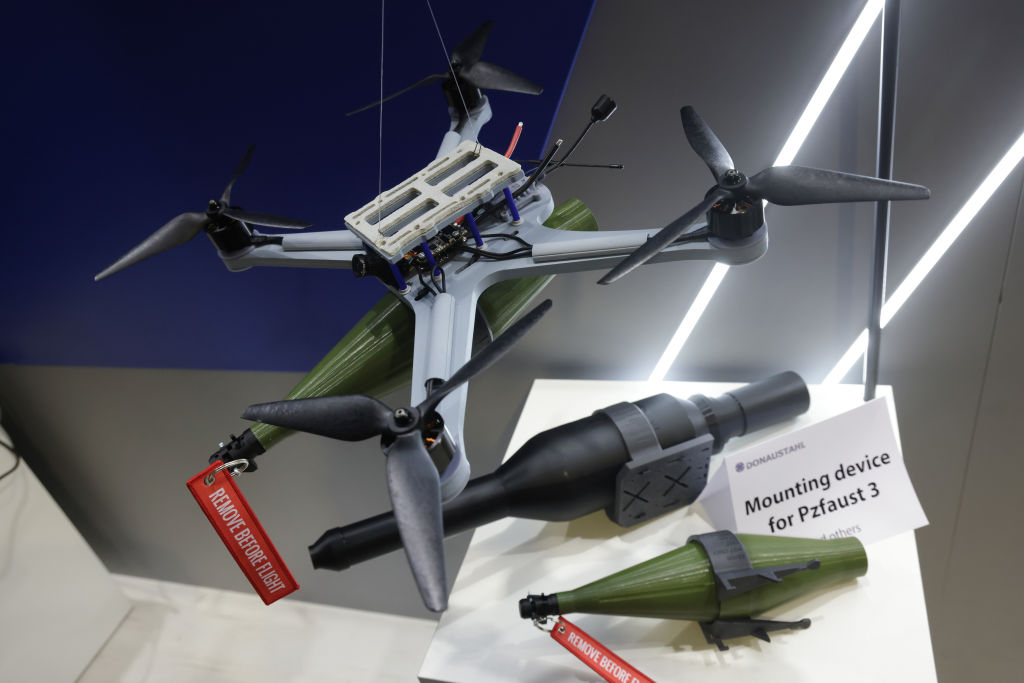An attack by the Islamic State-Sahel Province using suicide drones targeting an army post in Eknewan near the border with Mali killed 64 soldiers and marked the continuation of a troubling trend.
“According to military sources, the attack lasted nearly three hours,” security analyst Zagazola Makama reported of the May 25 attack on his website. “[It] was the first to involve the use of kamikaze drones by the assailants, marking a dangerous new phase in the security challenges facing Niger. The use of explosive-laden drones reportedly played a critical role in breaching defenses and inflicting heavy casualties.”
Counterterrorism efforts in Africa have grown more difficult in recent years, as armed groups are turning readily accessible commercial drones into deadly weapons and deploying them against military and civilian targets.
Eleven countries — Burkina Faso, the Democratic Republic of the Congo, Kenya, Libya, Mali, Mozambique, Niger, Nigeria, Somalia, Sudan and Togo — have experienced drone attacks. In the Sahel, the worldwide epicenter of terrorism, groups affiliated with al-Qaida and the Islamic State increasingly have become more agile, adept and deadly with their use of inexpensive commercial drones.
Hassane Koné and Fahiraman Rodrigue Koné, researchers with the South Africa-based Institute for Security Studies (ISS), said that Burkina Faso, Mali and Niger lack the capacity to monitor their borders effectively, let alone detect small, quick, low-flying drones.
“The weaponization of civilian drones represents a shift in asymmetric tactics as armed groups circumvent the conventional military superiority of the region’s armed forces,” the researchers wrote in a July 8 article. “These groups acquire drones relatively cheaply for modification and deployment against designated targets. Drones enable them to conduct ranged attacks that, while lacking precision, inflict damage and provoke panic among troops.”
A United Nations monitoring report released on July 24 stated that al-Qaida affiliate Jama’at Nusrat ul-Islam wa al-Muslimin (JNIM) has “reached a new level of operational capability to conduct complex attacks with drones.”
In Burkina Faso, terrorists have conducted more than a dozen kamikaze drone strikes since February. In May, JNIM launched a series of sophisticated, coordinated attacks on urban centers in western and central Mali, targeting military positions and administrative and economic sites.
JNIM fighters also were suspected of launching the first suicide drone attack on a Togolese military post in Djignandjoaga on April 9.
“The rapid spread of JNIM’s drone warfare tactics underscores the group’s expanding operational reach, tactical innovation and strategic intent in the littoral states of West Africa,” the Armed Conflict Location & Event Data organization reported in a May 9 briefing. “Particularly in Togo, the group has expanded its operations from traditional raids and IED ambushes to include the use of rockets, directed explosive charges and drones to attack military camps, convoys and patrols.”
The two ISS researchers said the proliferation of cheap drones in the Sahel is likely to exacerbate the extremist insurrections that have persisted for more than a decade and could fuel their long-held ambitions to expand into coastal countries on the Gulf of Guinea.
“Over the past two years, their adaptation to enable the dropping of improvised explosive devices on military positions has soared,” they said. “This shows how the tactics of armed groups adapt and evolve to meet the increase in military equipment and resources deployed by governments in the region.”
The researchers called for Sahelian militaries to invest in drone detectors and anti-drone guns that can jam communication and navigation systems or physically intercept drones with nets or projectiles.
“As armed groups increasingly shift away from direct confrontations with military forces, favoring surprise attacks and harassment tactics, defense and security forces must overhaul their strategies,” they wrote. “Even though they are costly, anti-drone systems are needed to protect critical infrastructure and civilians.”

